Intel unveiled its new Panther Lake laptop chips at a recent Tech Tour event in Arizona.
The new chips will power laptops and other devices set to be revealed in January, but the company gave an early look at what people can expect from the new chips. The company’s major focus areas include AI, efficiency, and performance. In fact, you’ll read the words ‘efficiency’ and ‘performance’ a lot throughout this article.
Perhaps Intel’s biggest announcement is that it’s producing chips using its 18A 2nm process node. This finally delivers on the promised shift to the smaller node to improve performance and energy efficiency, which hopefully means it will close the gap between itself and competitors in the portable computing arena.
Intel dove deep into the technical details, but the high-level things I took away from the event were that the company is shifting to a system of chips (aka chiplets) instead of a system on a chip, enabling modularity, scalability, and better efficiency. An example of this with Panther Lake is that Intel can scale up performance on different variations of the chip by adding on, for example, more GPU cores.
New chip production techniques unlock benefits
Tim Wilson, VP of design engineering group and general manager, SOC, at Intel. | Image credit: Intel.
Another way that Intel is improving things on 18A is by introducing new technologies called RibbonFET and PowerVia. At a high level, RibbonFET is a new take on the transistor layout that rotates the ribbon architecture Intel has used for years with FinFET. While it may seem like a simple change, it brings a host of benefits, including better control over electrical current, reduced power leakage, and the ability to enable more miniaturization of transistors, among other advantages. In short, RibbonFET enables smaller transistors, and therefore more transistors, which should improve performance.
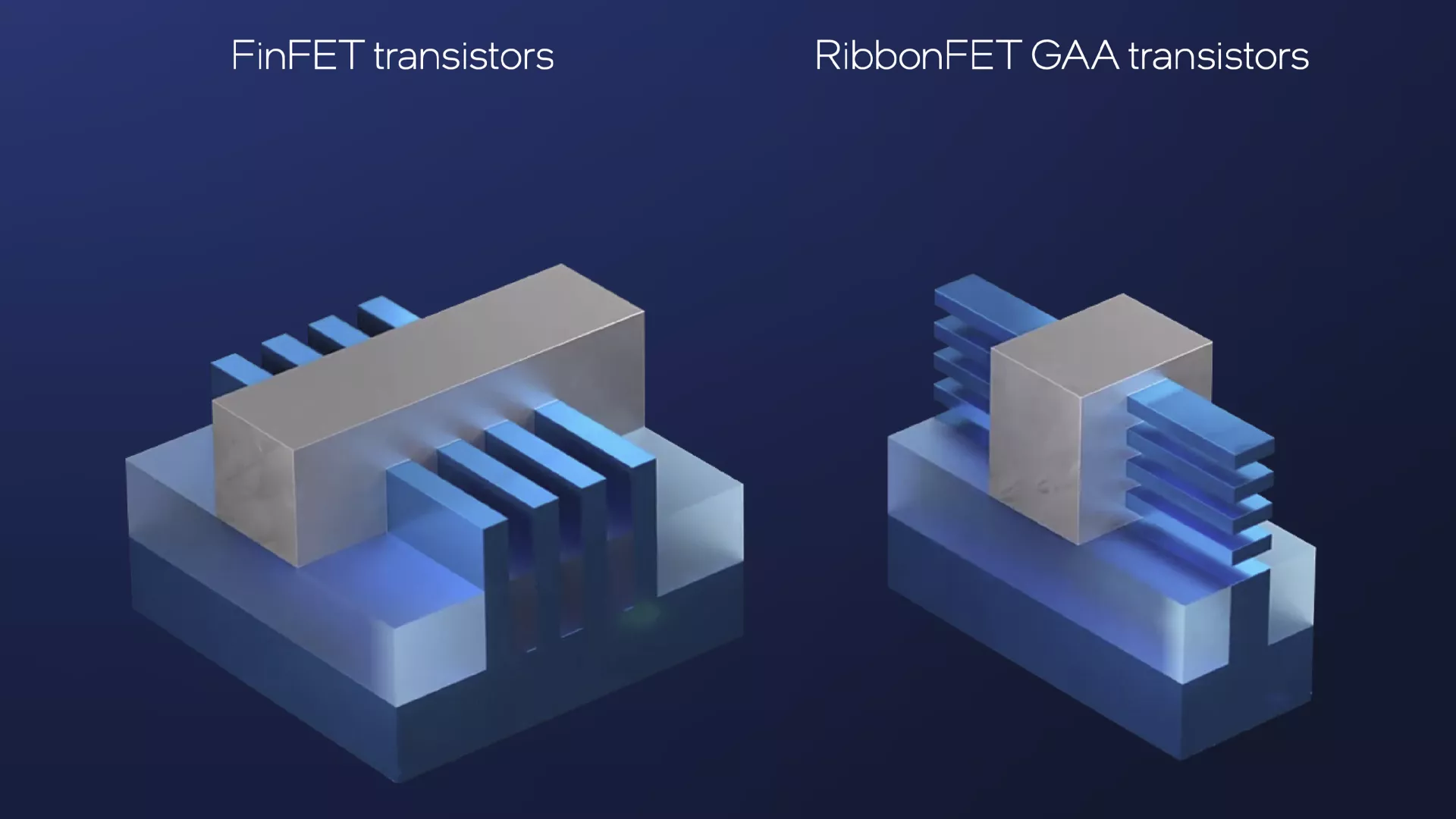
Diagram comparing FinFET (left) and RibbonFET (right). | Image credit: Intel.
In a similar vein, PowerVia tech shifts power delivery to the backside of the chip. The move adds complexity and cost, but Intel claims the benefits are worth it. To understand the significance here, it’s important to understand how companies have made computer chips for years. Chips are made from the bottom up in layers, starting with the tiniest parts (the transistors) and working up to larger parts like wires for signals, called interconnects, and power delivery.
However, as chips have shrunk and everything has gotten more dense, it’s made the larger layers of interconnects far more chaotic, to the point that it can actually hurt performance. This is where PowerVia comes in — by shifting power delivery to the backside, it reduces the complexity of the wires. That should reduce signal interference with the interconnects and ideally boost performance altogether.
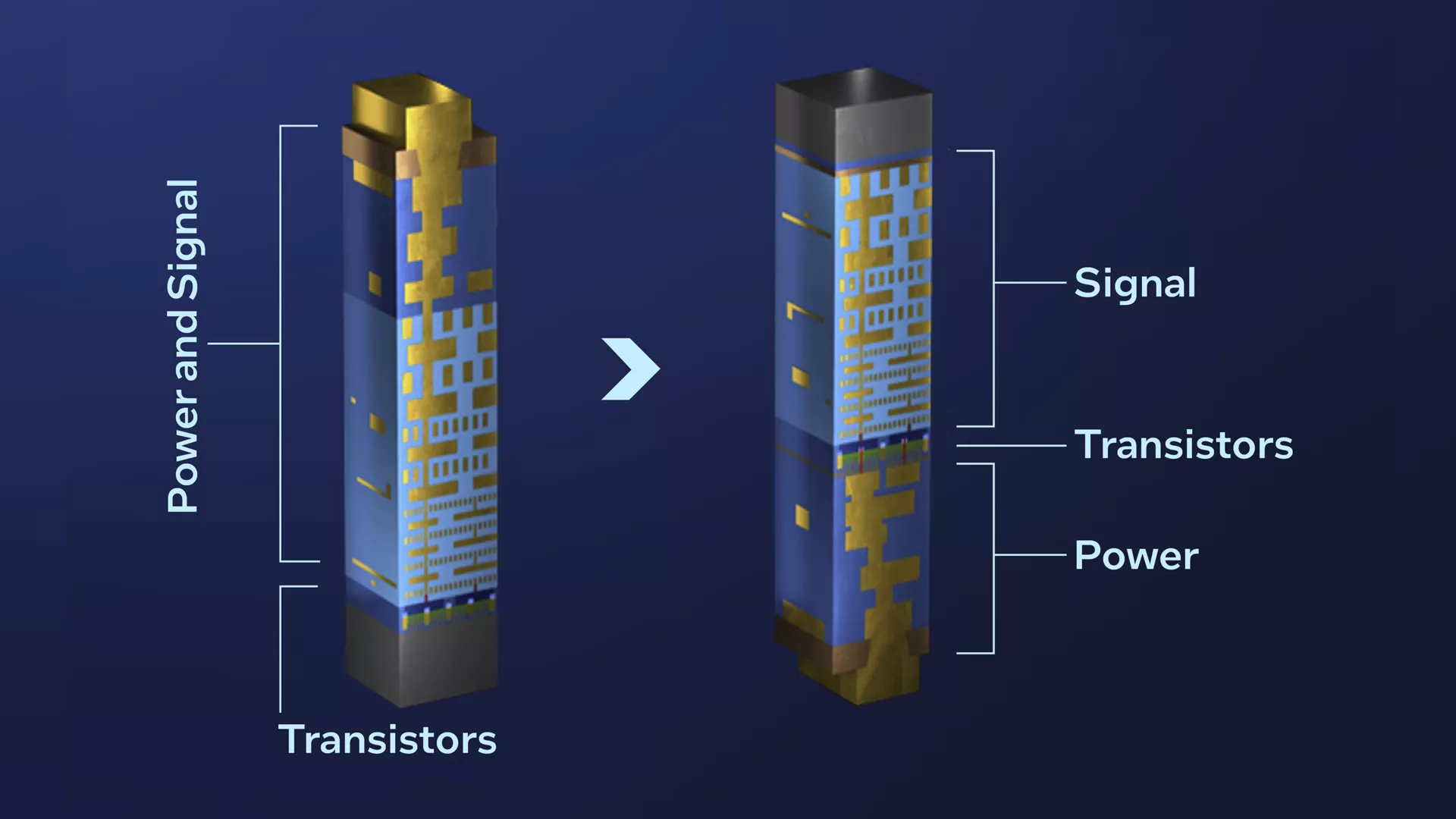
Diagram showing typical chip power delivery (left) and backside power delivery via PowerVia (right). | Image credit: Intel.
Backside power delivery increases the cost of making the chip, but Intel said it has reduced the frontside cost and brought the whole chip production cost of 18A in line with prior chips. Overall, the company claims that 18A has a 15 per cent increase in performance per watt over the Intel 3 process, as well as a 1.3x increase in chip density.
More power, less power draw

Chris Auth, VP and Director of Advanced Technology Programs and Services. | Image credit: Intel.
Of course, those aren’t the only major improvements. For example, Panther Lake is getting some changes to its performance and efficiency cores (p- and e-cores) along with something Intel calls the “low-power island.” The chip company pitched Panther Lake as a combination of the power efficiency of Lunar Lake and the performance of Arrow Lake, which should result in a product that is both more powerful and less power hungry.
Panther Lake uses four Intel 18A Cougar Cove p-cores and, depending on the configuration, up to 8 Darkmont e-cores, plus an additional four Darkmont cores on the low-power island. Intel detailed three configurations of Panther Lake, including eight- and 16-core variants. The third configuration is a 16-core chip with additional GPU capabilities, which we’ll dig into in a bit.
A wafer of Intel Panther Lake chips.
The low-power island is a cluster of four Darkmont e-cores set apart from the other p- and e-cores that will take on the bulk of the work the chip does. The company said it improved its scheduling operations with Thread Director, which should better utilize the available cores. Put simply, Panther Lake chips will try to handle workloads using the low-power island and dynamically expand work to the additional e-cores or the p-cores as needed. That should translate to real-world power savings, with the more efficient cores handling the bulk of workloads and tapping into the p-cores for occasional performance boosts.
Again, we’ll stick to a high-level here, but Cougar Cove and Darkmont bring memory improvements, better branch prediction and more to boost performance and reliability. Intel said Panther Lake boasts 40 per cent lower power draw and similar performance to Lunar Lake and Arrow Lake H chips, or 10 per cent more performance at similar power draws to Lunar and Arrow Lake.
Similar gains play out with multi-thread performance, with Intel claiming Panther Lake performs as much as 50 per cent better at similar power draws to Lunar Lake, or draws 30 per cent lower power at similar performance to Arrow Lake. In other words, Panther Lake should perform as well as or better than past Intel chips while using less power.
Sipping juice on the low-power island
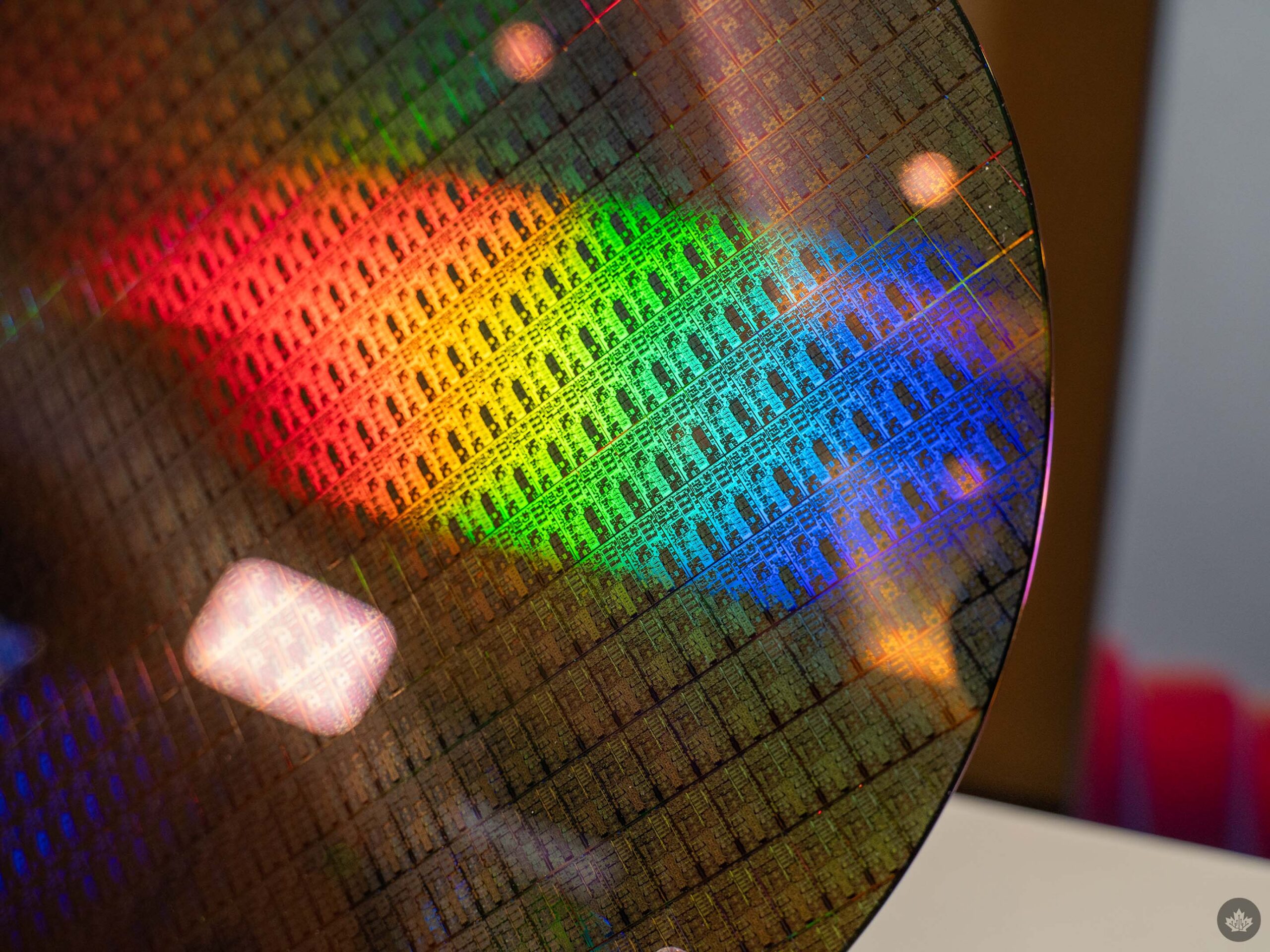
Typically, I’d take a beat here to stress that all these performance improvements are based on Intel’s own testing and point out that it’d be good to be skeptical of these numbers until they’re backed up by real-world, independent testing. However, I’m fairly confident that Panther Lake will bring notable improvements to power efficiency—it’s just a question of how significant those improvements will be.
One of the many demos I got to see at the Tech Tour showed three laptops, a reference Panther Lake device, a Lunar Lake laptop and an Arrow Lake laptop, performing the same group of tasks. Intel attempted to simulate a typical work environment with the demo laptops each running a Teams video meeting, playing a YouTube video, editing a spreadsheet, and viewing a PowerPoint.
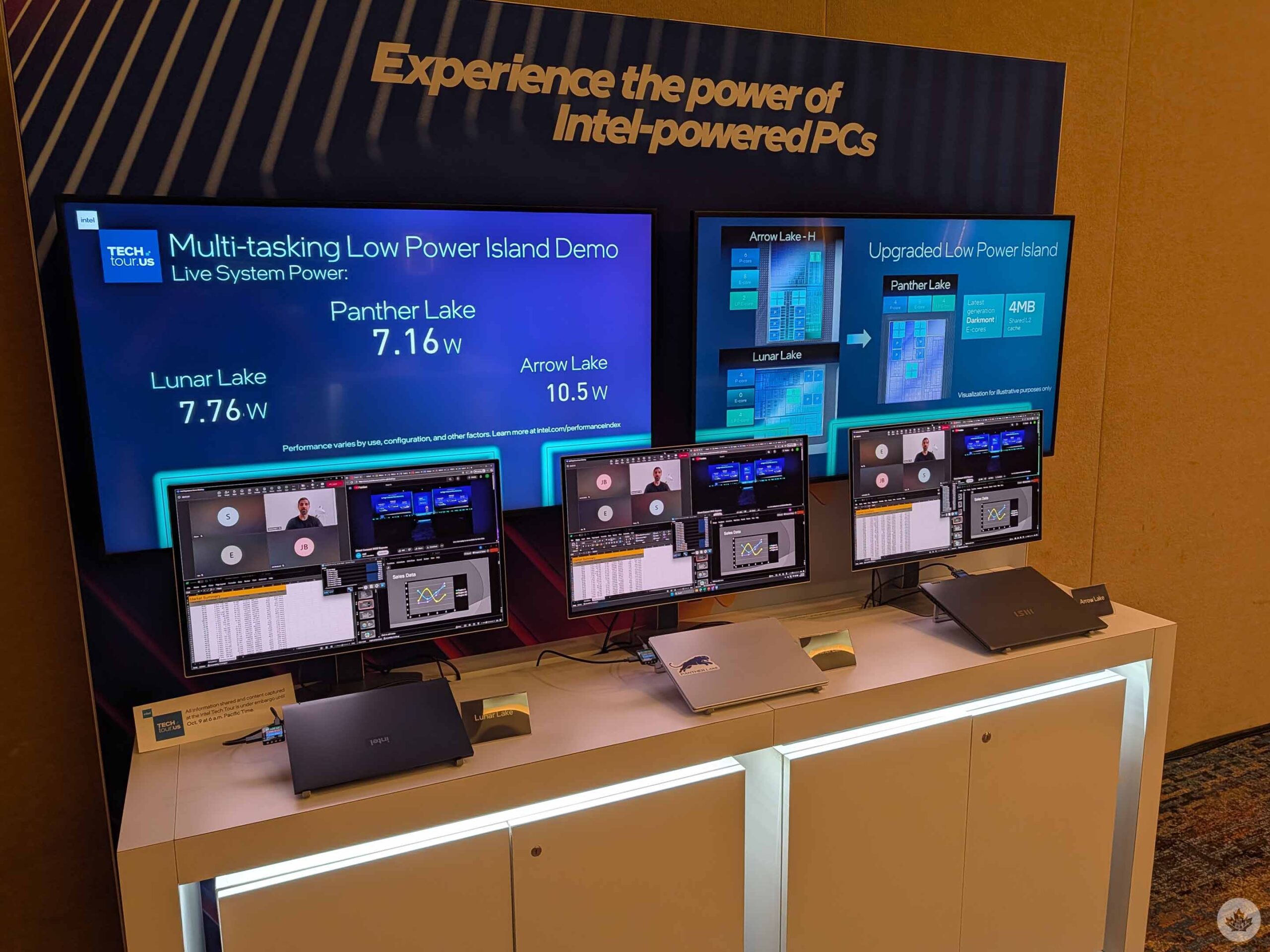
Demo comparing power draw of Lunar Lake (left), Panther Lake (middle) and Arrow Lake (right) in similar tasks.
The demo showed that the Panther Lake laptop was able to contain the bulk of the workload on the low-power island, reducing overall power consumption compared to the other laptops. The numbers fluctuated a lot throughout the demo, but Panther Lake hovered around the 7W mark, while Arrow Lake drew around 10-11W. Lunar Lake was also around the 7-8W mark, but was typically a little higher than Panther Lake.
Also of note, Intel highlighted its new ‘Intelligent Experience Optimizer’ (IEO) tool that will automatically handle power delivery when users set their laptop’s power mode to ‘Balanced.’ As it stands, Windows users can pick between better efficiency or performance with a slider in the Settings app, but Intel says this isn’t ideal as it’s manual and a fixed state. But with IEO, the company claims a roughly 19 per cent performance increase in some benchmarks. This sounds like a great change for me, as I find myself constantly tweaking my power mode in Windows to ensure my needs are met, such as tuning to best efficiency when I know I’ll be away from an outlet for an extended period of time. But if future laptops can tackle that for me with IEO, it’ll be a more seamless experience.
Thin and light gaming? Maybe!
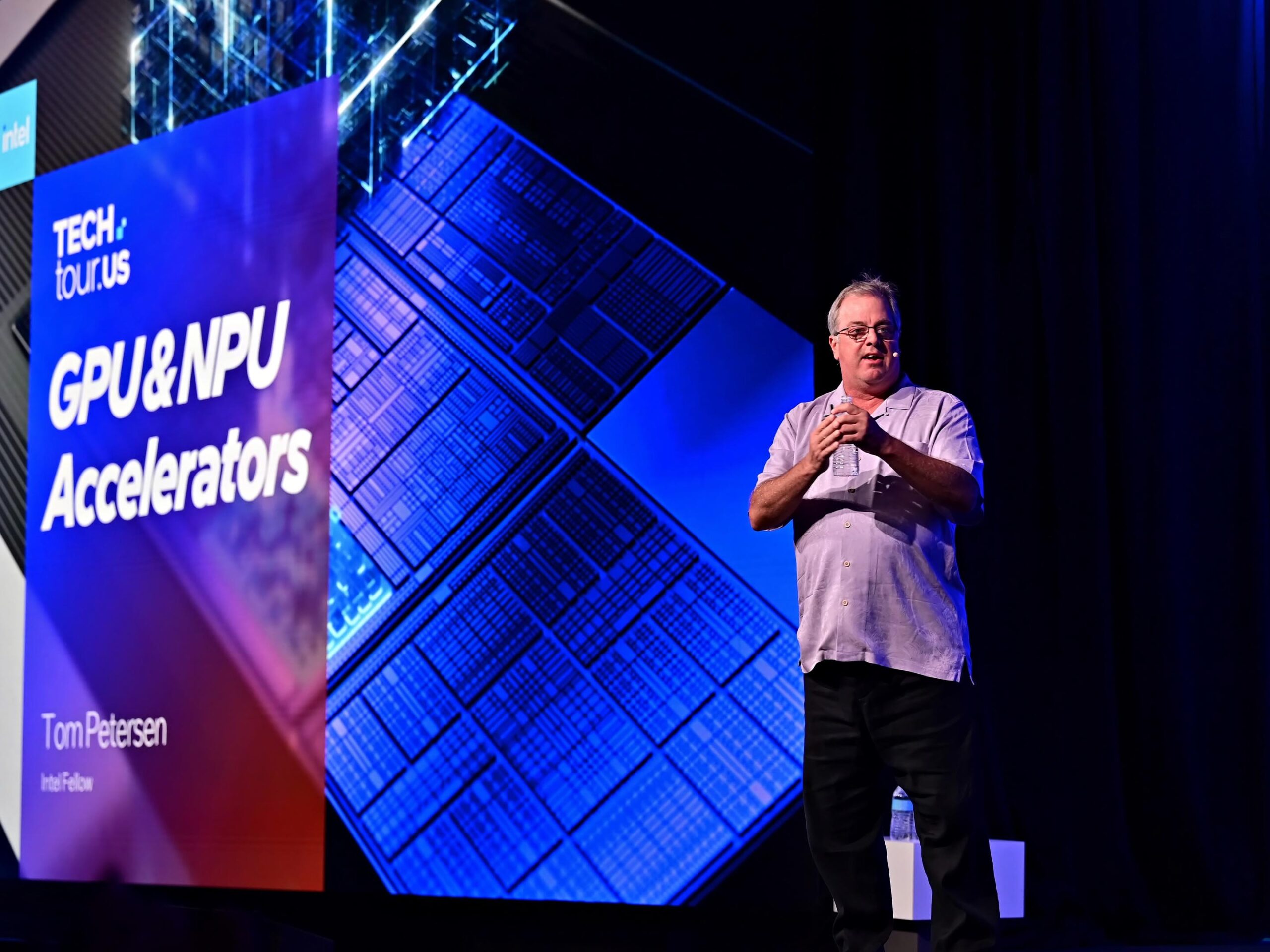
Tom Peterson, Intel Fellow, Intel Architecture, Graphics and Software. | Image credit: Intel.
Intel also made some big upgrades to the GPU included on Panther Lake chips, with a shift from Xe2 to Xe3 graphics tech. However, things are a bit confusing, as Intel classifies Panther Lake’s GPU as being part of the Intel Arc B-Series, which includes the Battlemage discrete graphics that run on Xe2. Eventually, I think Intel will get its GPU naming back on track (hopefully starting with the company’s next Arc discrete GPU).
Confusing naming aside, the important changes here are in the hardware. Panther Lake ships with two GPU variants, dubbed 4Xe and 12Xe, based on the number of Xe cores in the GPU. Intel said it reworked Xe to be more scalable and the company did a ton of work to improve and optimize various parts of the graphics pipeline, such as increasing utilization with a variable register allocation and enhancing the ray tracing unit.
Like with the CPU cores, Intel says Xe3 brings significant performance and efficiency gains over the previous generation. For example, Panther Lake offers 50 per cent more performance than Lunar Lake’s Xe2, but has about 40 per cent better performance per watt than Xe on Arrow Lake H.
Intel’s Xe3 changes produced some impressive results. The company claims that a Panther Lake chip with 12 Xe cores takes 22.84ms to generate a single frame, compared to 45.44ms for an 8 Xe core Lunar Lake setup.
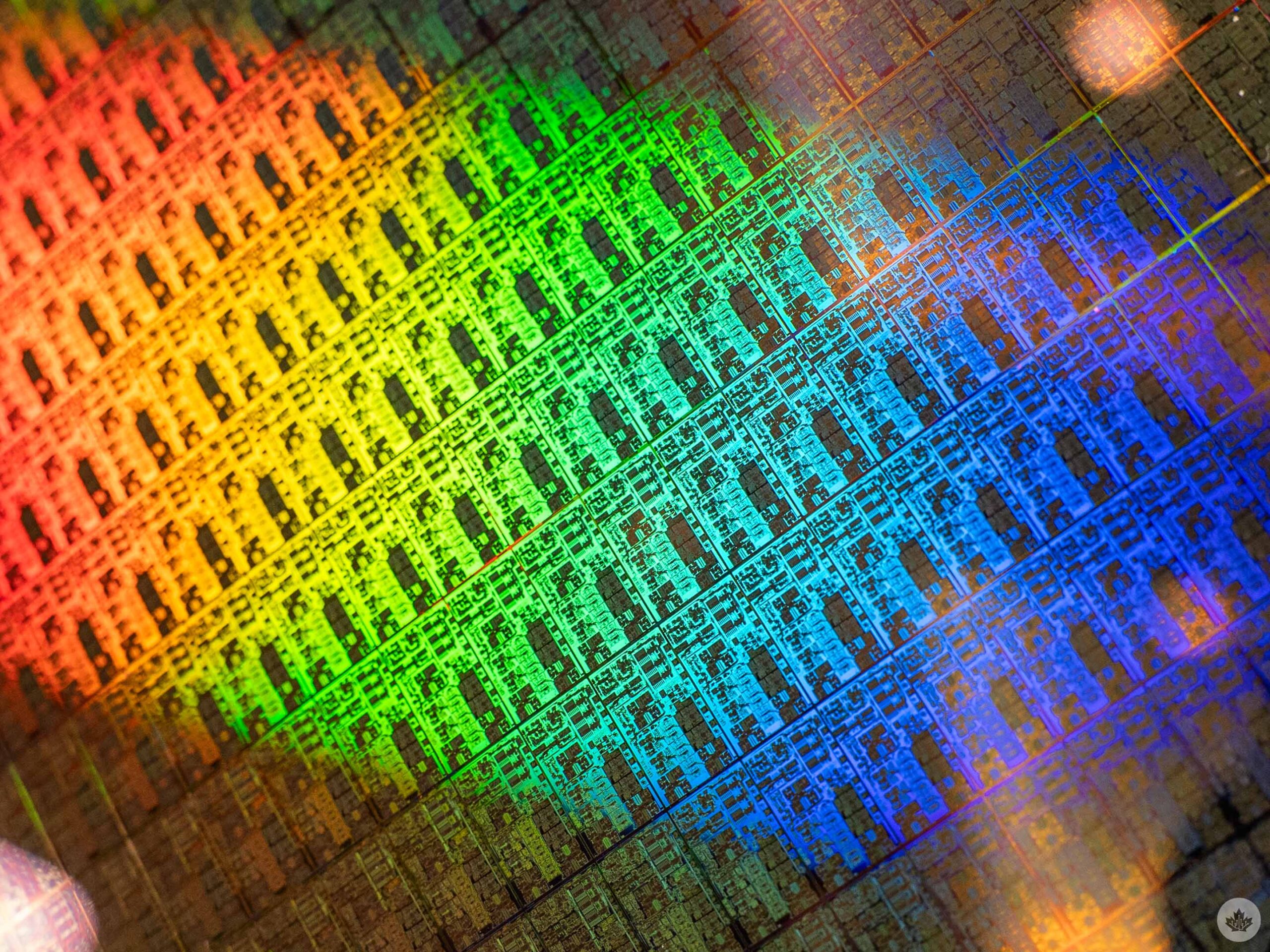
Further, Intel detailed its Xe Super Sampling Multi-Frame Generation (XeSS-MFG) tech, which uses AI to generate additional frames. The way Intel explains it, XeSS-MFG takes far less time to generate frames than it takes the GPU to render a single frame, which allows it to generate as many as four frames per one rendered frame. That leads to a notable increase in perceived smoothness in games. I’m still not sure how I feel about AI-generated frames in general, but Intel’s pitch is somewhat compelling — through MFG, Panther Lake allows for smoother-feeling gaming while using significantly less power than traditional discrete graphics. Depending on how it works in real-world testing, this could be a way to squeeze playable framerates out of a thin-and-light laptop.
Another significant improvement area is GPU power delivery. Previous chip generations struggled to manage power delivery to various components, resulting in stuttery CPU and GPU performance. To address this, Intel developed Intelligent Bias Control v3, which prioritizes e-cores and utilizes a new velocity-based algorithm to smooth out spiky performance with improved power delivery. These changes should result in 10 per cent higher frames per second (fps).
Better on-device AI with upgraded NPU

Rounding out the major announcements from Tech Tour, Panther Lake will sport an upgraded NPU that boosts power and efficiency.
Panther Lake features the NPU 5, a new approach that takes a less-is-more approach. Intel reduced the number of Neural Compute Engines (NCEs) in NPU 5 but doubled the size of the MAC Array (which Intel describes as the “bulk” of the NPU) in each NCE. This significantly improves the efficiency and shrinks the overall area taken up by the NPU.
The end result is that NPU 5 offers slightly more performance than NPU 4 while taking up less space on the chip. Intel says NPU 5 can achieve up to 50 TOPS compared to 48 TOPS for NPU 4. Coupled with native support for FP8 datatypes, NPU 5 also offers faster AI performance while consuming less energy.

Overall, Intel claims up to 180 TOPS of performance across the CPU (10 TOPS), NPU (50 TOPS), and GPU (120 TOPS) on Panther Lake. This multi-component AI strategy isn’t new for the company, but it pays off in on-device workloads by allowing different AI tools to target different chip components for better overall results.
MobileSyrup saw several demos showcasing the AI capabilities of this new chip. One demo featured a humanoid robot with real-time processing powered by Panther Lake, while another showed how the new chip could become the “brain” of an intersection, using AI models to monitor traffic conditions and adjust light timings accordingly.
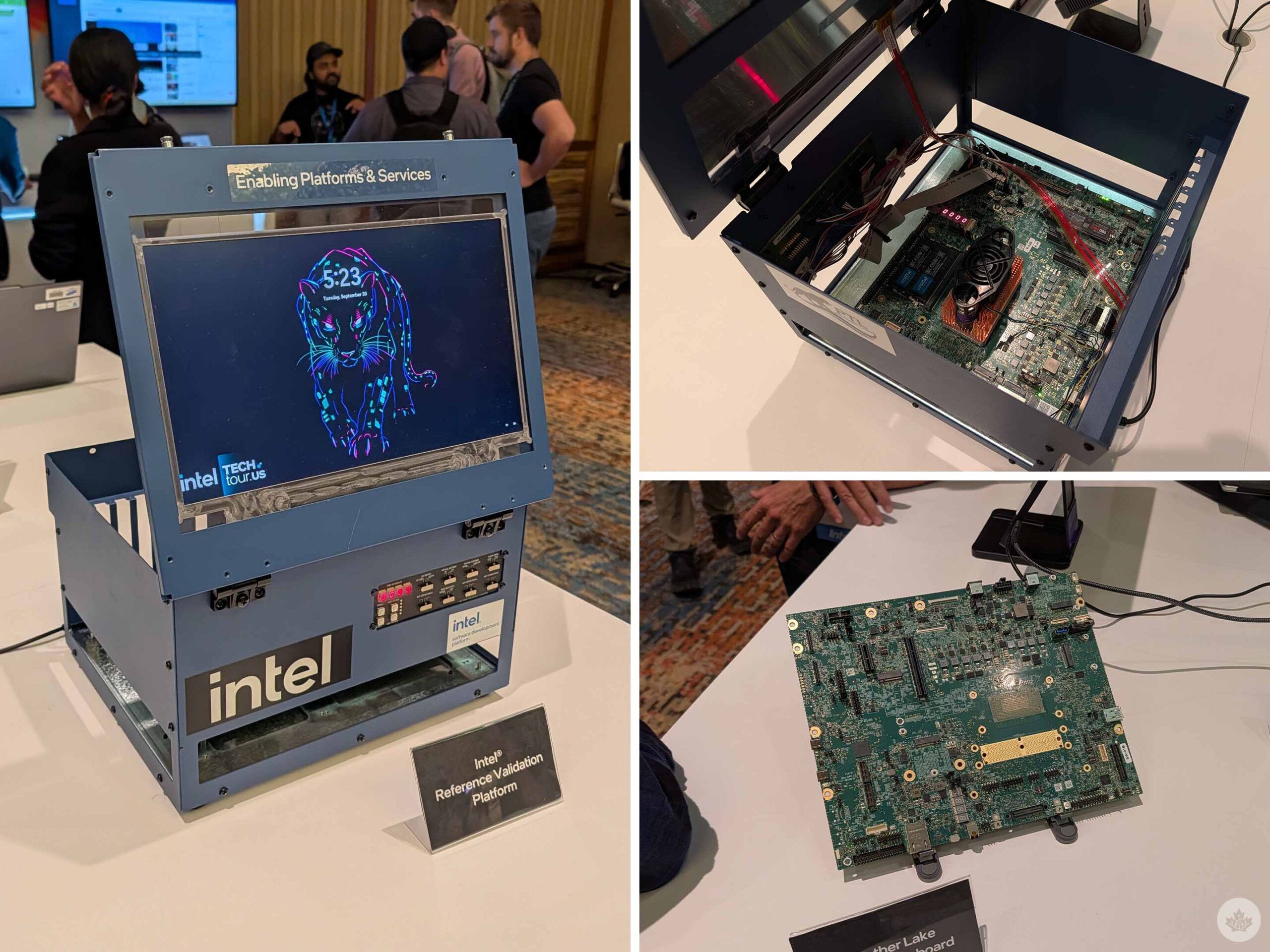
There was also a demo showcasing a possible restaurant setup where a camera hooked up to a Panther Lake machine monitors an order packing station. Workers can place a receipt with a list of items to pack in the order, and then a locally-run AI model uses the camera feed to check for the items as they’re packed into a bag. If it detects a missed item, the system could warn the packer that they forgot something. Plus, all the packed orders are catalogued, allowing workers to search through previous orders.
Ultimately, Panther Lake sounds very promising. If the company’s new chips are as good as it claims, it could put Intel in a better spot for laptop chips. I’ve started opting for non-Intel chips in my laptops for the improved battery life. Panther Lake, however, sounds like it could directly address power efficiency. If the changes mean better battery life from laptops with Intel chips, this may be a more compelling option for mobile computing. Now, we just need to wait for real-world testing to see just how much of an improvement it brings.
MobileSyrup may earn a commission from purchases made via our links, which helps fund the journalism we provide free on our website. These links do not influence our editorial content. Support us here.








